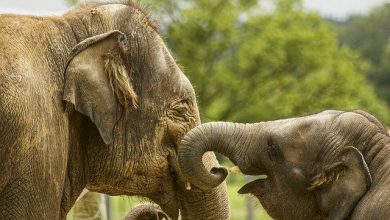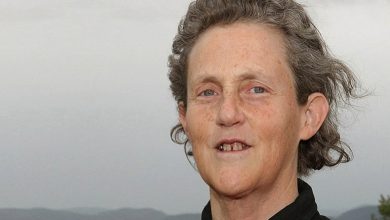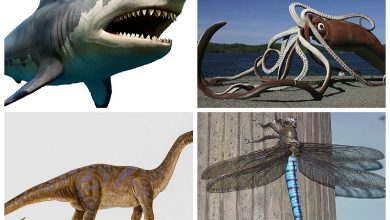Do you know what the sand dollar is?
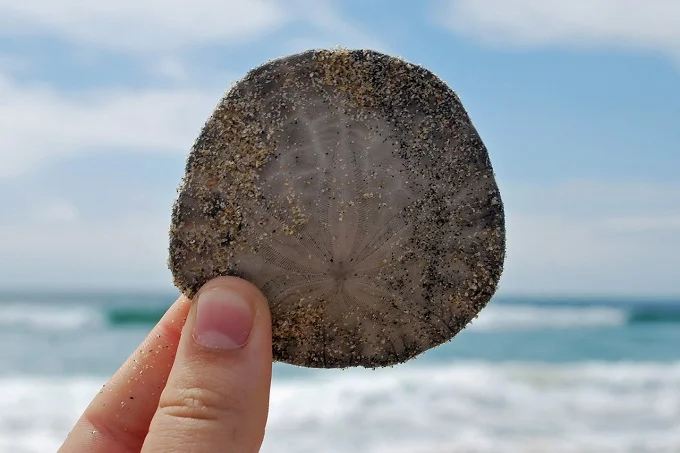
Have you ever heard of sand dollars? According to old legends, the sand dollars would be the coins used by the sirens and the people of Atlantis; other legends tell instead that they were left on Earth by Jesus Christ to help the evangelists in teaching the faith. But what are sand dollars, really?
These particular objects are the remains of marine animals: not shells of strange mollusks as many think, but the skeletons of some sea urchin species. In fact, the term sand dollars is generically used to indicate all those sea urchins characterized by having a flattened body. Therefore, the reference is to the order of echinoderms Clypeasteroida, to which more than 20 different species belong. Among these, the best known are Dendraster excentricus, Echinarachnius parma, and Mellita quinquiesperforata.
Morphology of sand dollars
Sand dollars belong to the echinoderms’ phylum and to the Echinoidea class: the taxonomic placement in this class makes them relatives of the other sea urchins, even if they have different characteristics.
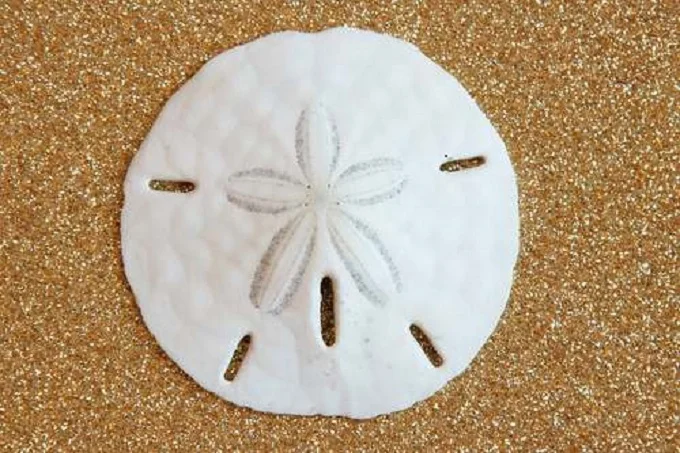
In fact, sand dollars have the peculiarity of being more flattened than other sea urchins and of having much shorter spines. The flattening and the length of the spines are the results of the adaptation to their lifestyle, as they are excellent diggers of sandy bottoms. The spines, in particular, have lost the defensive role they have in other sea urchins and have been transformed into structures dedicated to nutrition and movement.
The average size of these echinoderms is 5-10 cm in diameter. The average life span varies between 6 and 10 years.
Skeleton and body symmetry
Regardless of the species, sand dollars have a characteristic skeleton that unites all members of the order Clypeasteroida. It is just that flattened skeleton that earned them the dollar name!
The skeleton is known as a test; it is rigid, formed by plates of calcium carbonate arranged according to a pentaraggiate symmetry (or radial pattern with five sections). There are the so-called pores on the skeleton or perforations arranged like the petals of a flower. In live animals, the floral pattern formed by the pores is not visible, as the test is covered with spines.
The spines are, in turn, equipped with very small structures called cilia which give the surface an almost velvety appearance. The spines of sand dollars, while always being shorter than those of other hedgehogs, change in size and color depending on the species. Generally, the colors vary between green, blue and purple. When the animal dies, the thorns leave the skeleton naked, making the characteristic symmetry of the septa and pores that run through the calcareous skeleton appreciable.
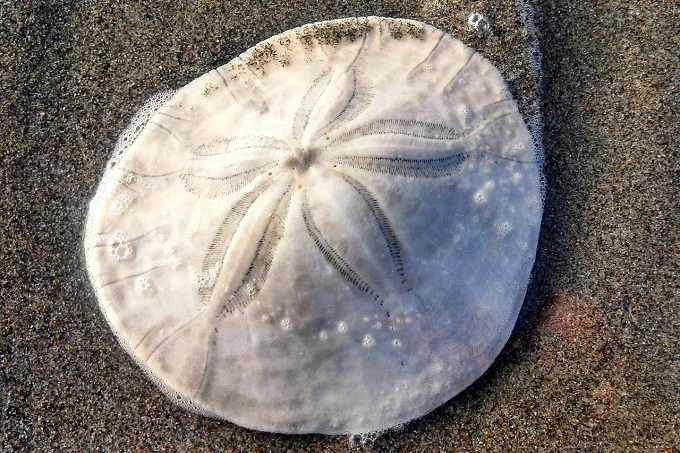
The mouth of sand dollars, like that of other sea urchins, faces downward, in contact with the seabed. However, unlike their relatives, they have the anus in a posterior position (rather than above, opposite to the mouth). This feature is linked to a secondary bilateral symmetry, which derives from the particular evolutionary history of sand dollars. Over time, in fact, from organisms that live on the seabed (epibenthos), the sand dollars have been transformed into organisms that live in the seabed (endobenthos).
Movement of sand dollars
Sand dollars are animals that live in contact with the bottom and within it, but they are not sessile (i.e. fixed, immobile) organisms. They are, in fact, able to perform various movements, such as rotation and progressive displacement.
In general, sand dollars, like other sea urchins, are able to rotate on themselves, that is, around the vertical axis of the body (the one that passes through the mouth). This movement is related to the radiated symmetry of the animal. Sea urchins also have the ability to move progressively, a feature that in sand dollars is probably accentuated by a connection with secondary bilateral symmetry. They are, in fact, able to advance by moving with the vertical axis perpendicular to the substrate. Efficient movement in an inclined direction has also been noted in some species.
Distribution and habitat
Sand dollars are found at modest depths, in the so-called intertidal zone (between the high and low tide limits). They are present in all coastal marine ecosystems, except in Europe and Antarctica.

Sand dollars are organisms that live in contact with the bottom and burrow into it for protection and nourishment. Although the species differ from each other in the speed of movement in the sand, they usually take about ten minutes before they sink completely. Given their distribution in the water column, the skeletons of these urchins can often be found on the beach after storm surges.
Feeding and reproduction
Sand dollars are predominantly detritivores, meaning they feed on the organic material they find in the sediment. They can also feed on algae and diatoms, and some species have also been described as suspensivores, i.e. able to feed on the material filtered by the water.
Nutrition is mediated by triangular teeth arranged in a ring in the center of the mouth, which collectively takes the name of Aristotle’s lantern. The teeth are constantly growing and consumed at the level of the free end; ligaments and small muscles are finally held in place
Sand dollars feature individuals with separate genders. Fertilization is external and is mediated by the emission of gametes into the water (spawning phenomenon): it is precisely for this reason that sea urchins are usually found in groups, as this behavior facilitates the fertilization of the gametes once they are emitted into the environment.
The first phases of the life cycle of sea urchins are represented by a planktonic larva (i.e. that remains suspended in water), which goes through numerous stages of transformation before forming the test (the rigid skeleton) and becoming an adult.
One study suggested that asexual reproduction of these curls could be used as a defense mechanism. Asexual reproduction (cloning) is a widespread reproductive strategy both among plants and animals and allows the origin of an organism identical to the original one.
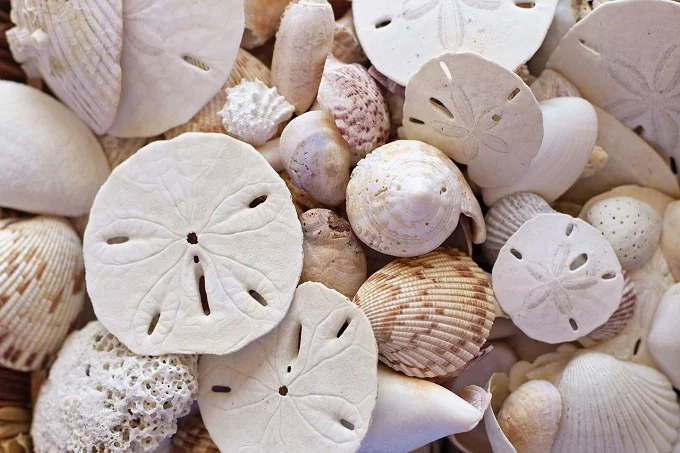
In sand dollars, cloning is not only a mode of reproduction but can be a valid defense tool, as it allows to increase the number of individuals but to reduce their size: in doing so, the organisms become less visible to predators. In detail, this behavior has been noted on the larvae which, although already modest in size, are the target of various predators. With the cloning mechanism, the larvae can reduce their size (to about 2/3 or half of the starting size), becoming invisible to the eyes of predators.
Main species of sand dollars
Dendraster excentricus
Dendraster excentricus is a sand dollar species found primarily in North America, from southern Alaska to California. Usually, populations are densest between 4 and 12 m deep. At these depths, individuals have an average size of 9 cm in diameter. Above 10-15 m, the average size of individuals progressively decreases with increasing depth. The spines of this species vary between lavender-gray and purplish-black. Furthermore, species from the South Pacific areas appear to have lighter colors than those from the North.
Echinarachnius parma
Echinarachnius parma is found mainly along the east coast of North America, from the northern part of the state of New Jersey. It has a circumpolar distribution, so it can also be found in Alaska, Siberia, and Japan. Like the other sand dollars, it is widespread in the intertidal zone, i.e., at modest depths. The average size is smaller than that of the Dendraster excentricus, oscillating between 5 and 10 cm in diameter (when growth is complete).
Mellita quinquiesperforata
Mellita quinquiesperforata is also a species of sand dollar found along the Pacific coast, with a range extending from Virginia to the Gulf of Mexico and the Brazilian coast. This animal can also be found along the coasts of Bermuda, Jamaica, and Puerto Rico. This species has important dimensions, managing to reach even 14 cm in length and 15 cm in width. The color varies between light and dark brown but can occasionally be greenish-gray.
Whether they are called sand dollars or sea biscuits, these particular flattened sea urchins have given way to many fantasies, but they certainly still have much surprising uniqueness to discover!

